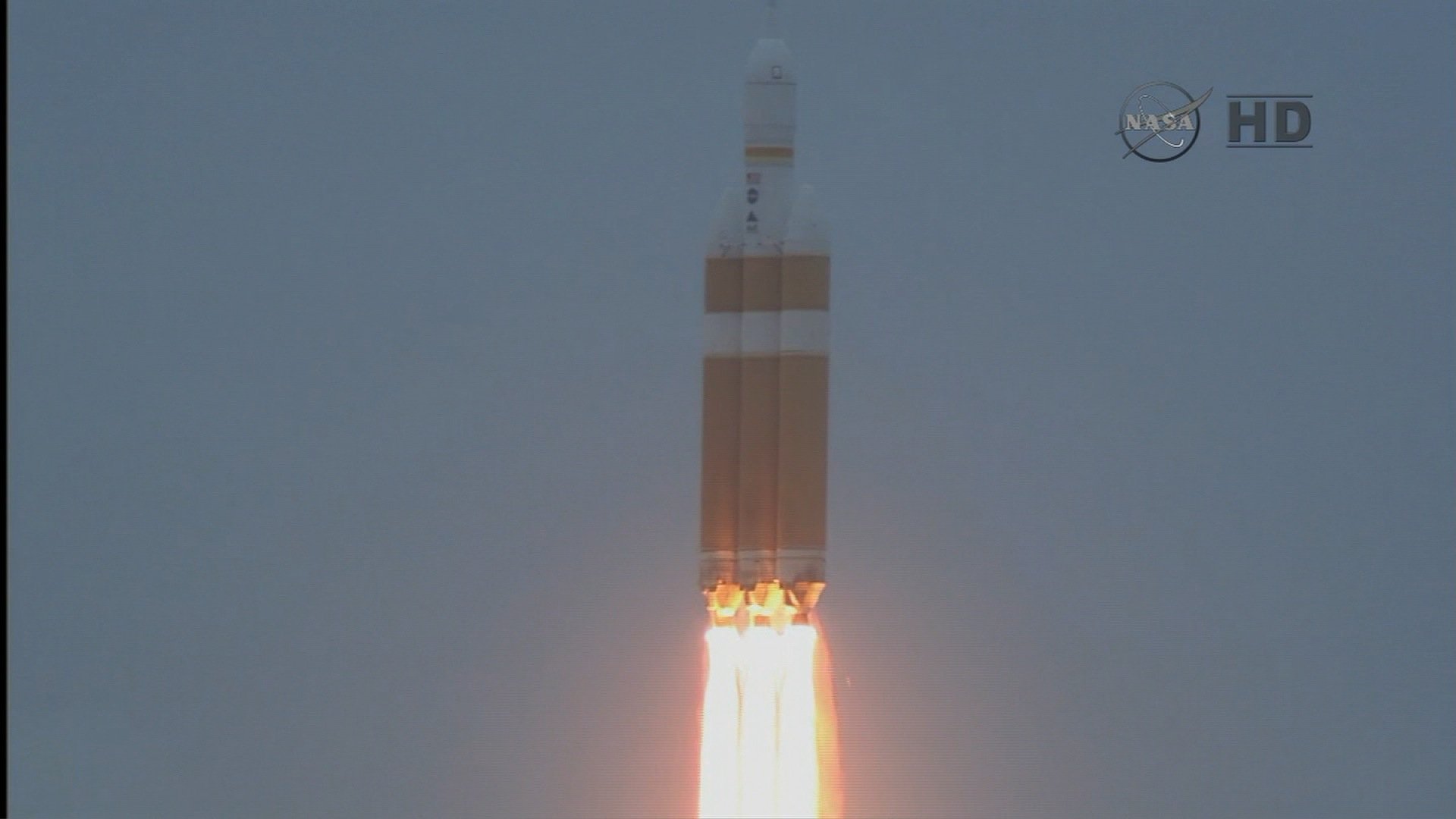By Amanda Barnett and Jason Hanna
(CNN) — NASA’s new Orion spacecraft lifted off from Florida’s Cape Canaveral and rocketed to orbit Friday morning — the first test flight for a program that NASA hopes eventually will get astronauts to asteroids and Mars.
The 4½-hour, uncrewed, two-orbit flight is taking Orion farther from Earth than any craft designed for human flight has been since the Apollo 17 mission to the moon in 1972.
“The launch itself (was) just a blast,” NASA Orion program manager Mark Geyer quipped on NASA TV shortly after liftoff, “as you see how well the rocket did. It was exciting to see.”
The Delta IV Heavy rocket lifted off at 7:05 a.m. ET and put the capsule and the rocket’s second stage into low-Earth orbit less than 20 minutes later.
Then, two hours later, a milestone: The second stage lifted Orion higher for its second orbit, expected to be about 3,600 miles above Earth, or 15 times higher than the International Space Station.
Orion is expected to splash down in the Pacific Ocean, roughly 600 miles off the coast of Baja California, about 4½ hours after launch, or roughly 11:30 a.m. ET.
The re-entry will be an important test for Orion’s heat shield. The craft is expected to hit speeds of more than 20,000 miles per hour before re-entering the atmosphere — heating the shield to about 4,000 degrees Fahrenheit.
Eight parachutes are expected to slow the capsule from about 300 mph to 20 mph so it can drop safely into the Pacific Ocean. Two U.S. Navy ships, the amphibious transport dock ship USS Anchorage and the Military Sealift Command rescue and salvage ship USNS Salvor, will help NASA recover the capsule.
The launch comes a day after NASA scrubbed its first attempt because of a failure of some valves in the boosters to close. Those valves, which allow fuel to flow into the boosters before launch, are supposed to close just before liftoff.
Orion is expected to send back some amazing pictures of Earth, NASA said. If the weather cooperates, NASA said a drone will provide a live video feed of the splashdown.
A new beginning
NASA hopes Orion will usher in a new era: Eventual human exploration of space beyond the moon.
“We haven’t had this feeling in a while, since the end of the shuttle program,” Mike Sarafin, Orion flight director at Johnson Space Center, said in a preflight briefing on Wednesday.
The Orion crew module looks like a throwback to the Apollo era, but it is roomier and designed to go far beyond the moon.
Orion would have a role in NASA’s planned exploration of an asteroid — perhaps one that the agency would first robotically redirect to orbit around the moon. NASA says it hopes that Orion, pushed by a more powerful rocket system under development, will send astronauts to an asteroid in the 2020s.
NASA hopes Orion later will send astronauts to Mars’ moons, and eventually to Mars itself.
When it becomes fully operational, Orion’s crew module will be able to carry four people on a 21-day mission into deep space or six astronauts for shorter missions. By comparison, the Apollo crew modules held three astronauts and were in space for six to 12 days. Orion’s crew module is 16.5 feet in diameter and Apollo was 12.8 feet in diameter, NASA said.
Orion is expected to take up its first crew in 2021.
Though Orion’s first flight won’t have people on it, it won’t go up empty. It will carry the names of more than a million people packed on a dime-sized microchip.
“Sesame Street” is sending up some mementos to inspire students about spaceflight, including Cookie Monster’s cookie and Ernie’s rubber ducky.
Also going up: an oxygen hose from an Apollo 11 lunar spacesuit and a small sample of lunar soil. A Tyrannosaurus rex fossil from the Denver Science Museum will be on board and lockers will be filled with flags, coins, patches, poetry and music.
The-CNN-Wire
™ & © 2014 Cable News Network, Inc., a Time Warner Company. All rights reserved.




